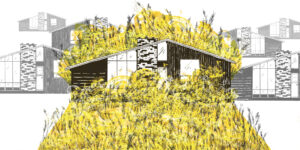Buildings consume up to 40 per cent of global energy use and contribute up to 30 percent of annual global greenhouse gas emissions — the ‘passivhaus’ style could be the solution.
Originally developed in Germany, highly energy efficient buildings, using up to 90 per cent less energy than traditional houses, are being considered the “building standard of tomorrow,” according to Passive House Canada. In May 1988, Wolfgang Feist and Bo Adamson asked themselves how buildings could be designed in a more sustainable, energy efficient way. Drawing on this research and with the help of architects Bott and Ridder, Feist went on to build the first Passive House, completed in Darmstadt, Germany in 1991.
Thousands of Passive House buildings have been built throughout Europe, with an increasing number worldwide in places ranging from North America to the Far East. One such example on a huge scale is at the University of Toronto, who are building a first-of-its-kind residence in the passive house style.
Canadian Geographic spoke with Wisdom Tettey, vice president of the University of Toronto and principal of the University of Toronto Scarborough, who is overseeing the new 750-bed student residence building.
On what the new residence will include
This will double the available residence capacity at the University of Toronto Scarborough. The project will feature some of the most sustainable architectural design standards and it is one of the first of its category in North America. The residential floors will include a mix of single- and double-occupancy bedrooms, fully accessible suites, study spaces and common areas, including kitchen and lounge spaces. The building will also have a rooftop garden and terrace, a food servery and dining hall, event space, and mixed-use spaces for workshop-style learning.
On how it’s different
Passive house design allows for high energy efficiency. The building’s energy-efficient features include triple-glazed windows, walls with improved thermal performance and continuous insulation, among others. The result is 40 to 60 per cent in heating and cooling-related energy savings compared to conventional buildings.
This project is unique in the sense that it’s the largest passive house project ever undertaken in North America. It’s also unique in that it’s a dormitory style building with a communal food servery, whereas other large passive house projects have been more conventional apartment style.
On how the residence shows U of T’s commitment to sustainability
This residence is yet another manifestation of U of T’s ongoing commitment to sustainability and reducing our ecological footprint. As one of North America’s largest passive house projects, it benefits from a low-energy design concept that includes high-efficiency criteria for building and window insulation, as well as heating and ventilation. The unique concept optimizes energy consumption and the use of sustainable design, allows the university to bring to life our goal of providing a healthy and inspirational living environment for our students while addressing climate change.
The new residence is scheduled to open in the fall of 2023. Learn more about it here.





